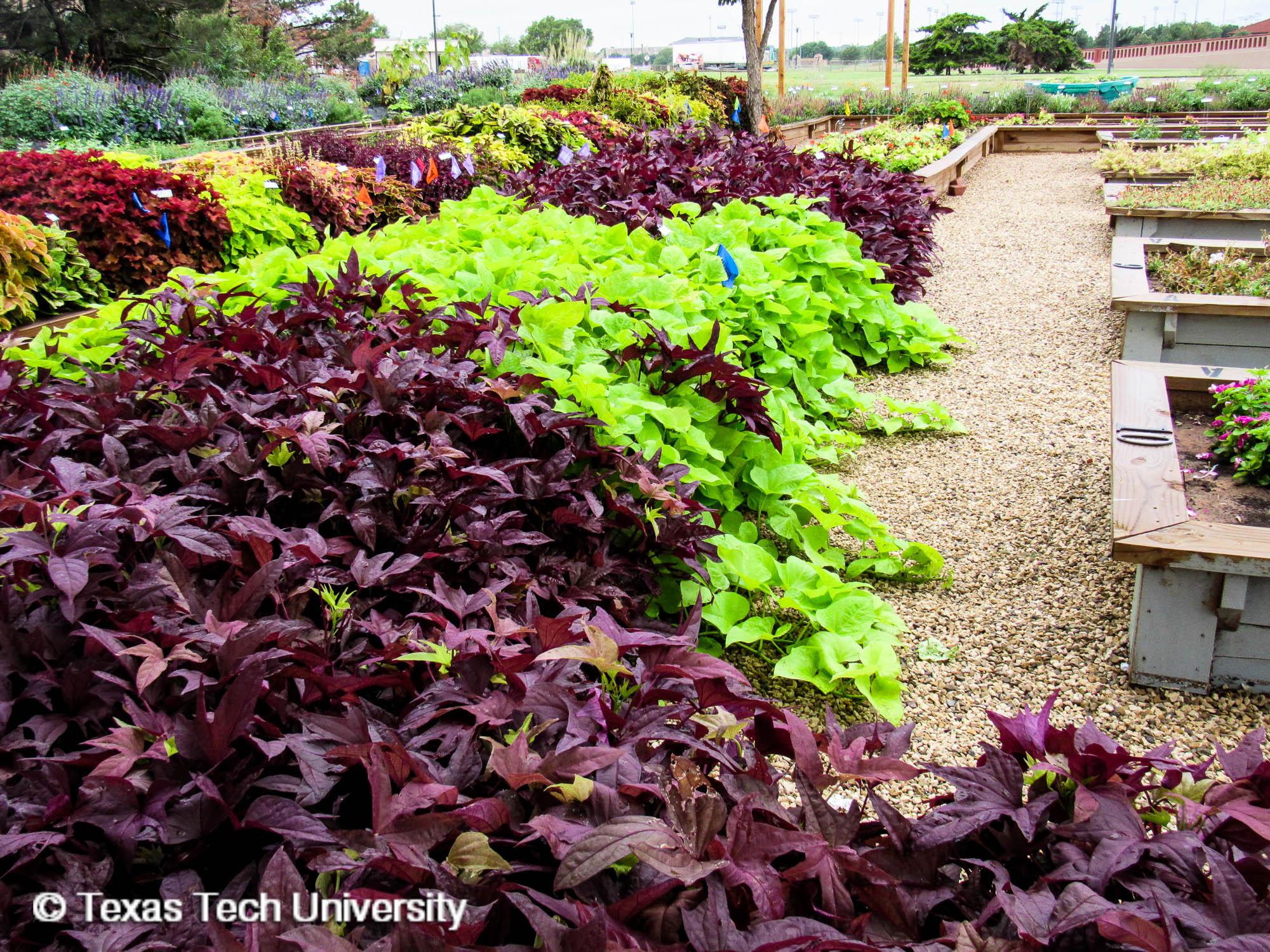
Note that when growing plants in outdoor containers and baskets, they may require more frequent waterings than they would in the yard or garden. Because of its trailing habit of growth, it is ideally suited for use as a 'spiller' in the 'spiller-thriller-filler' container combination plant it near the edges where it can spill gracefully over the pot. Sweet Caroline Red Sweet Potato Vine is a fine choice for the garden, but it is also a good selection for planting in outdoor containers and hanging baskets. It can be propagated by cuttings however, as a cultivated variety, be aware that it may be subject to certain restrictions or prohibitions on propagation. This is a selected variety of a species not originally from North America. It is somewhat tolerant of urban pollution. It is not particular as to soil type or pH. It does best in average to evenly moist conditions, but will not tolerate standing water. You may want to keep it away from hot, dry locations that receive direct afternoon sun or which get reflected sunlight, such as against the south side of a white wall.
#Sweet potato vine full
This plant does best in full sun to partial shade. This fast-growing annual will normally live for one full growing season, needing replacement the following year. Its foliage tends to remain low and dense right to the ground. Sweet Caroline Red Sweet Potato Vine will grow to be about 8 inches tall at maturity, with a spread of 5 feet. Sweet Caroline Red Sweet Potato Vine is recommended for the following landscape applications It has no significant negative characteristics. The flowers of this plant may actually detract from its ornamental features, so they can be removed as they appear. This is a relatively low maintenance plant. Its relatively fine texture sets it apart from other garden plants with less refined foliage. Sweet Caroline Red Sweet Potato Vine is a dense herbaceous annual with a trailing habit of growth, eventually spilling over the edges of hanging baskets and containers. Its attractive deeply cut lobed leaves remain red in colour throughout the season. You can harvest sweet potato greens or young shoots any time during growth.Sweet Caroline Red Sweet Potato Vine is primarily valued in the garden for its spreading and trailing habit of growth. Mulch between the plants to keep weeds in check. Newly planted potatoes like regular water, but once established, the plants require little moisture. Give the plants a head start by digging a little compost into the soil before planting, but avoid high-nitrogen fertilizers.

In containers, make sure there are adequate drainage holes. Give them well-draining soil whether they are grown in pots or in the ground. They love heat and won’t tolerate chilly weather or heavy, soggy soil. Sweet potato vines enjoy a bright, sunny location outdoors with similar conditions in the home. Sweet potatoes prefer sandy, well-drained soil, full sun, and plenty of space for the vines to spread. Plant the sweet potato “slips” in spring because sweet potatoes need four to six months of consistently warm weather. Of all the potatoes, sweet potatoes are easiest to grow. Sweet potato vine leaves also provide impressive amounts of fiber, along with calcium, magnesium, manganese, zinc, copper, potassium, and iron. For starters, the leaves are an excellent source of antioxidants and contain high levels of vitamin A and C, as well as riboflavin, thiamin, folic acid, and niacin. Potato vine plant leaves are packed with nutrients. Why Eating Potato Vine Leaves is Good for You Once the sweet potato greens are tender, chop the leaves and use them in recipes or sauté them with butter and garlic, then splash the hot sweet potato greens with soy sauce or vinegar and a dash of salt.


Boiling the sweet potato vine leaves in a small amount of water removes any toughness or bitterness. The leaves are prepared much like spinach or turnip greens. No matter what you call them – sweet potato leaves, camote tops, or kamote tops – the vines are rich and flavorful, although like most greens they may be somewhat bitter. So, are sweet potato leaves edible? Yes, definitely! Next question: what are “camote tops?” The vines of sweet potatoes (especially the deep purple varieties), are known as camote tops (or kamote tops) in Spanish-speaking countries. If you’ve never tried eating potato vine leaves, you’re missing out on a tasty, highly nutritious veggie. However, the leafy green tops are edible too. In the United States, most gardeners grow sweet potatoes for the big, sweet tubers.


 0 kommentar(er)
0 kommentar(er)
